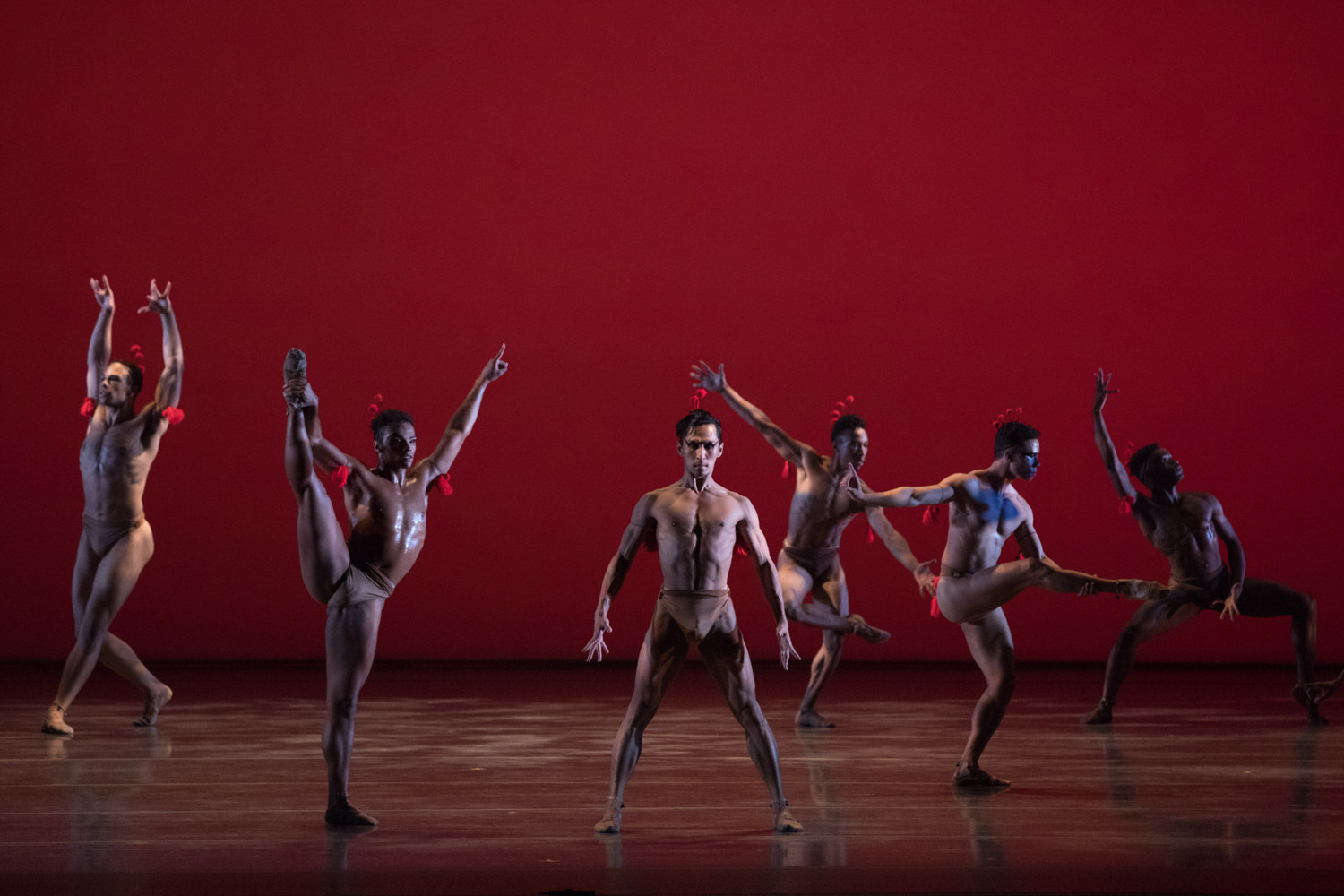Review: TWO COMPANIES DEDICATE A BALLET EVENING TO ARTHUR MITCHELL at Kennedy Center Opera House

The Miami City Ballet began its Friday Ballet across America evening with George Balanchine's Walpurgisnacht Ballet (1980), "definitely the world according to Balanchine," wrote Suzanne Farrell in her autobiography. The Miami ensemble got off to a ragged start, literally not up to speed, but once Principal Katia Carranza took the stage, in the role originated by Farrell, the ladies got with the program. Carranza combined necessary speed and technique with glorious attention to musical detail; every beat has been choreographed, and Carranza never missed one even if all she had to move was just a portion of an arm. Her cavalier, Rainer Krenstetter, added to his substantial elevation significant skill in landing--not only softly, but often exceptionally still. And by the time the Gounod score reached its feverish finish, the Corps de Ballet were at last working with the precision required for the final wedge formation; Balanchine's final image requires absolute solidity from the Corps as backdrop so that the sensational to the shoulder lift of Carranza by Krenstetter contains the power it's meant to.
Two dancers from the Dance Theatre of Harlem (DTH) joined two from Miami City Ballet for the disappointing world première of Gustave Le Gray No. 1 by Pam Tanowitz. Set to a monotonous piano solo by Caroline Shaw, the costumes obscured the dancing. The bright red garments, credited to Reid Bartelme and Harriet Jung, featured wide, loose panels of fabric which flowed from shoulder and attached to ankle. Every move Tanowitz put on the dancers had an equal and opposite action by the fabric. The notion of having the dancers move the piano from stage right to stage left while pianist Sylvia Jiang kept playing distracted from the distracting costumes; these events were then upstaged when a dancer went offstage to acquire a spare piano bench for Ms. Jiang. The audience in the Opera House roared with laughter. To be sure, comedy has a place in dance in general and ballet in particular: for example Mark Morris' The Hard Nut, Jerome Robbins' The Concert, and Balanchine's Midsummer Night's Dream. But one laugh does not equal comedy; perhaps DC dance audiences can one day in the future see more of the New York-based Tanowitz' body of work.
Claudia Schreier's Passage, which premièred in early May, marks both the 50th anniversary of DTH and the 400th of the arrival in America of the first slave ship. Except for the stunningly beautiful representation by two teams of three dancers each of a couple of dolphins that might have passed the ship during the journey, Schreier doesn't depict or literally dramatize the passage from Africa to North America. Rather, she finds movement for the dancers of DTH which reveals the spirited lives of the people. Often, during a sustained lift, a pair of dancers form a shape that then moves as a unit--a novel way of creating vocabulary for a historic dance form. Schreier's use of Jessie Montgomery's lively score resembled the way Balanchine used to "solve" Stravinsky with the choreography.
Finally, DTH performed Geoffrey Holder's Dougla (1974) which really ought to conclude their every performance, world without end, à la Ailey's Revelations. Dougla celebrates the multicultural world of Trinidad with both formal movement and athleticism. The DTH company, amplified with dancers from the Collage Dance Collective, moved energetically and gracefully through Holder's complicated summary of how the people of the island walk, interact, turn cartwheels, shake their heads or their fingers or their hips, and finally form a procession that looks as if it's been going on since the dawn of time. Amanda Smith, as the matriarchal Woman in Green, is a riveting performer; Choon Hoon Lee's work as Stickman was compelling. Holder's costumes, gorgeous as ever, lift the spirit as does his percussive score, thrillingly conducted by Tania Leon.
Dance Theatre of Harlem has concluded its performances for the week, but the Miami City Ballet continues through Sunday at the Kennedy Center Opera House with more performances of Walpurgisnacht Ballet and pieces by Justin Peck, Sir Kenneth MacMillan, Jerome Robbins, and Twyla Tharp. For tickets, call 202.467.4600 or visit kennedy-center.org.
photo by Teresa Wood; artists of Dance Theatre of Harlem, Geoffrey Holder's Dougla
Videos
